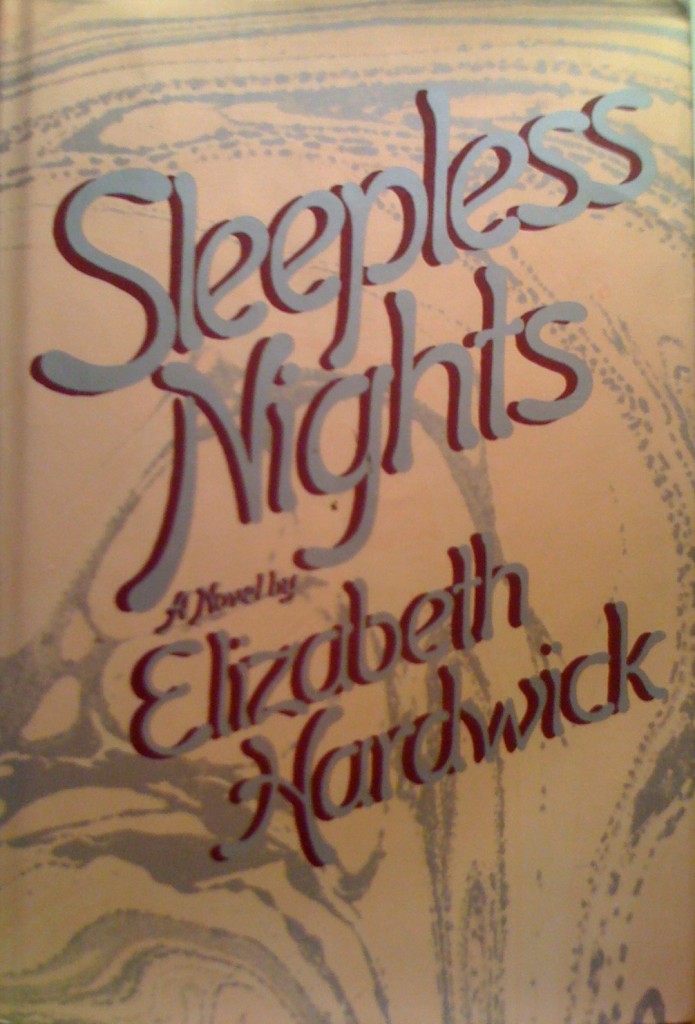.
.
Melancholy suffuses “Sleepless Nights.” A collage of memories, ruminations, vignettes, and character sketches, its 150 pages encompass a lifetime of poignant observations by a first-rate writer.
The book is most powerful as a remembrance of persons, mostly women, now dead (“They are gone, with all their questions unanswered”). Hardwick recaptures the essence of their lives, examining without compromise “the niceness and the squalor and sorrow.” Hardwick’s prose is a wonder. She assembles telling details in the service of building a series of fateful narratives. She produces writing that is in the best sense “novelistic” — even if the resulting book falls outside the category of a novel. The book is beyond category, and is no less rewarding for that fact.
Every few pages Hardwick recounts another love story she either participated in or was a wide-eyed witness to. She refers to them as “love affairs with energy and hope.” Each affair begins well. For example, she describes a temporary roommate in her Manhattan apartment, a gay man who “was one of those who look into new eyes and say: Now I am going to be happy.” Yet every affair turns tragic, in its own way. These stories are so fully (yet economically) modeled that you’ll swear, by the close of the book, that you’ve read several novels. With Hardwick, the relationships of men and women, of both high and low station, almost always lead to bitter endings. Closest to home, a sad bitterness attaches to Hardwick’s own reflections on men, from her earliest encounters (among the “couples, looking into each other’s eyes, as if they were safe”) to her caustic memory, at the book’s end, of “a lifetime with its mound of men climbing on and off.”
Hardwick always shows a remarkable empathy for the life journeys of others, especially for the deprived, those she finds “worn down by life.” Of a janitor, Hardwick notes: “He was one of those men who acted as if he expected to be shouted at and would not know how to reply.” Early in the book she profiles the doomed Billie Holiday, whom Hardwick knew in New York City in the 1940’s and 1950’s. The author re-envisions the jazz singer’s life, starting with a quick sketch of her physic presence (“the heavy laugh, marvelous teeth, and the splendid head, archaic, as if washed up from the Aegean”), moving on to her performances, then offering the lesson of her early death (“she shared the changeling’s spectacular destiny and was acquainted with malevolent forces”). A later chapter of the book, Part Nine, stands apart as a remarkable essay about the cleaning women whose lives intersected with Hardwick, as she moved from homes in Maine, Boston, and New York City.
The scope of Hardwick’s curiosity is wide-ranging, yet three of her interests struck me as noteworthy. One is her odd fascination, her obsession, with people’s teeth. While she tends to introduce new characters with only minimal physical descriptions, she invariably tales note of the person’s dental health, as if it were a critical component of moral character. Is this a bit of folk wisdom absorbed in her youth spent in the horse-breeding state of Kentucky? A notable item in her bag of writer’s resources is her familiarity with farm animals and their behavior, which she freely applies to people. A Depression-era socialist organizer in rural Kentucky “had the look of a clever turkey.” Two city street people, homeless women, “wander about in their dreadful freedom like old oxen left behind, totally unprovided for.” A final attachment is Hardwick’s love/hate relationship with New York City. Early in the book she argues for a clear linkage between person and place: “It is not true that it doesn’t matter where you live.” Her verdict on Gotham: “This is New York, with its graves next to its banks.” And then there’s this surprising statement: “A woman’s city, New York.”
I recommend “Sleepless Nights” to writers who want to write better. Hardwick belongs to the elite class of “writers’ writer”; come and learn from her. I also recommend the book to anyone fascinated with Manhattan of the post-WWII era, and to anyone who wants to spend a few hours with a companionate teller of women’s truths.
[A version of this review appears on Amazon, here.]
